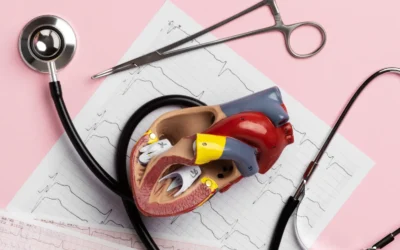Diabetes mellitus, a chronic metabolic disorder, affects millions of people worldwide. While the term “diabetes” is commonly used, it actually encompasses different types, with Type 1 and Type 2 being the most prevalent. Understanding the distinctions between these two types is essential for proper diagnosis, treatment, and management. In this article, we delve into the dissimilarities between Type 1 and Type 2 diabetes, exploring their causes, symptoms, treatments, associated complications, prevention strategies, and management techniques. So, let’s embark on a comprehensive journey to gain a profound understanding of these prevalent forms of diabetes.
Table of Contents
What is Type 1 Diabetes?
Type 1 diabetes, also known as insulin-dependent diabetes, occurs when the immune system mistakenly attacks and destroys the insulin-producing cells in the pancreas. This autoimmune response results in inadequate insulin production, leading to high blood sugar levels. Unlike Type 2 diabetes, which is often associated with lifestyle factors, Type 1 diabetes is primarily caused by genetic and autoimmune factors. Individuals with Type 1 diabetes rely on external insulin administration for survival. It commonly manifests during childhood or adolescence, but it can also occur in adults.
The exact cause of Type 1 diabetes remains unknown, but researchers believe that a combination of genetic predisposition and environmental triggers plays a significant role. Certain genes associated with the immune system may make individuals more susceptible to the autoimmune response that leads to Type 1 diabetes. Viral infections and exposure to certain environmental factors may act as triggers in individuals with a genetic predisposition.
What is Type 2 Diabetes?
Type 2 diabetes is characterized by insulin resistance, where the body’s cells become resistant to the effects of insulin. This type of diabetes is more common and usually develops gradually over time. While genetic factors can contribute to the risk of developing Type 2 diabetes, lifestyle factors such as poor diet, lack of physical activity, obesity, and family history play a significant role in its development. In most cases, it can be managed through a combination of lifestyle changes, oral medications, and, in some cases, insulin therapy.
Type 2 diabetes is often associated with metabolic syndrome, a cluster of conditions that includes increased blood pressure, high blood sugar levels, excess abdominal fat, and abnormal cholesterol levels. Insulin resistance, often accompanied by reduced insulin production over time, leads to elevated blood sugar levels. Lifestyle modifications, such as adopting a healthy diet, engaging in regular physical activity, losing excess weight, and managing stress, can improve insulin sensitivity and effectively manage Type 2 diabetes.
Causes and Risk Factors
Understanding the causes and risk factors associated with each type of diabetes is crucial for prevention and management. Type 1 diabetes is believed to be influenced by genetic factors, environmental triggers, and an autoimmune response. Certain genetic markers, such as the HLA (human leukocyte antigen) complex, are associated with an increased risk of developing Type 1 diabetes. Additionally, viral infections, particularly during childhood, may trigger the autoimmune response that leads to the destruction of insulin-producing cells.
On the other hand, Type 2 diabetes is strongly associated with lifestyle factors such as poor diet, sedentary behavior, and obesity. Having a family history of Type 2 diabetes also increases the risk. Ethnicity can also play a role, as certain populations, including African Americans, Hispanics, Native Americans, and Asian Americans, have a higher predisposition to developing Type 2 diabetes.
Other risk factors for Type 2 diabetes include age, with the risk increasing as individuals get older, and a history of gestational diabetes (diabetes during pregnancy). Additionally, conditions such as polycystic ovary syndrome (PCOS), hypertension (high blood pressure), and metabolic syndrome increase the likelihood of developing Type 2 diabetes.
Recognizing the Symptoms
Both Type 1 and Type 2 diabetes share common symptoms such as increased thirst, frequent urination, and unexplained weight loss. However, there are additional symptoms specific to each type.
In Type 1 diabetes, individuals may experience symptoms such as extreme hunger, fatigue, blurred vision, frequent infections, slow-healing wounds, and unexplained weight loss. The onset of Type 1 diabetes symptoms is usually rapid and severe, often leading to a prompt diagnosis.
Type 2 diabetes symptoms, on the other hand, may develop gradually, and some individuals may not experience noticeable symptoms for years. Besides increased thirst, frequent urination, and unexplained weight loss, symptoms can include frequent infections, blurred vision, slow wound healing, tingling or numbness in the hands and feet (diabetic neuropathy), and recurring yeast infections.

It’s important to note that some individuals may not display any symptoms, especially in the early stages of Type 2 diabetes. Regular check-ups and blood sugar screenings are crucial for early detection and prompt intervention.
Treatment Approaches
The treatment approaches for Type 1 and Type 2 diabetes differ due to their underlying causes and mechanisms.
For individuals with Type 1 diabetes, lifelong insulin therapy is required as the pancreas does not produce sufficient insulin or any insulin at all. Insulin is administered through multiple daily injections or an insulin pump. Blood sugar monitoring is essential to adjust insulin dosage and maintain optimal levels. Additionally, a well-balanced diet, regular physical activity, and careful management of carbohydrate intake are crucial for maintaining stable blood sugar levels.
Type 2 diabetes treatment often begins with lifestyle modifications, including dietary changes and increased physical activity. Losing excess weight, adopting a healthy eating plan that focuses on whole foods and portion control, and engaging in regular exercise can improve insulin sensitivity and blood sugar control. Medications may be prescribed, such as metformin, which helps lower blood sugar levels and improve insulin utilization. In some cases, other oral medications or injectable medications, including insulin, may be necessary to manage blood sugar effectively.
Complications and Prevention
Both types of diabetes can lead to serious complications if not properly managed. It is essential to maintain good blood sugar control to minimize the risk of long-term complications.
Type 1 diabetes carries the risk of hypoglycemia (low blood sugar), diabetic ketoacidosis (a life-threatening condition characterized by high blood sugar and ketones), and long-term complications affecting various organs and systems. These complications include diabetic retinopathy (eye damage), nephropathy (kidney damage), neuropathy (nerve damage), and cardiovascular complications such as heart disease and stroke. Regular monitoring, adherence to insulin therapy, healthy lifestyle choices, and regular medical check-ups are essential for minimizing the risk of complications.
Untreated or poorly managed Type 2 diabetes can also result in similar complications, including heart disease, stroke, kidney damage, nerve damage, and eye problems. Additionally, individuals with Type 2 diabetes are at an increased risk of developing other conditions such as high blood pressure and high cholesterol. However, many of these complications can be significantly reduced or prevented through proper management, regular check-ups, healthy lifestyle choices, and adherence to prescribed medications.
Diagnosis and Management
Diagnosing Type 1 and Type 2 diabetes involves various tests to evaluate blood sugar levels, including fasting plasma glucose tests, oral glucose tolerance tests, and A1C tests. Additional tests, such as antibody tests, may be conducted to distinguish Type 1 from Type 2 diabetes. Early diagnosis is crucial for timely intervention and effective management.
Management of both types of diabetes involves a multifaceted approach that includes regular monitoring of blood sugar levels, following a well-balanced diet, engaging in regular physical activity, taking prescribed medications, and addressing other risk factors such as smoking or excessive alcohol consumption. It is essential to work closely with healthcare professionals to create an individualized management plan that meets specific needs and goals.
In conclusion, understanding the difference between Type 1 and Type 2 diabetes is vital for individuals affected by these conditions, as well as for their families and healthcare providers. While Type 1 diabetes is an autoimmune disorder requiring lifelong insulin therapy, Type 2 diabetes is often managed through lifestyle changes, oral medications, and insulin therapy if necessary. By recognizing the symptoms, addressing risk factors, and adopting appropriate management strategies, individuals can lead fulfilling lives while effectively managing their diabetes.
Frequently Asked Questions
Can Type 2 diabetes turn into Type 1 diabetes?
No, Type 2 diabetes does not turn into Type 1 diabetes. They are distinct conditions with different underlying causes and treatment approaches.
Is Type 1 diabetes more common in children?
Yes, Type 1 diabetes is often diagnosed in children, adolescents, and young adults. However, it can occur at any age.
What are the long-term complications of Type 2 diabetes?
Long-term complications of Type 2 diabetes include heart disease, stroke, kidney damage, nerve damage, eye problems, and foot problems. Regular monitoring and proper management can help reduce the risk of these complications.
Can Type 2 diabetes be reversed?
While Type 2 diabetes cannot be completely reversed, it can be managed and controlled effectively through lifestyle changes, medication, and appropriate medical care.
What role does insulin play in managing Type 2 diabetes?
In Type 2 diabetes, insulin may be used as part of the treatment plan when other measures, such as lifestyle changes and oral medications, are not sufficient to control blood sugar levels. Insulin therapy helps regulate blood sugar and improve overall diabetes management.





0 Comments